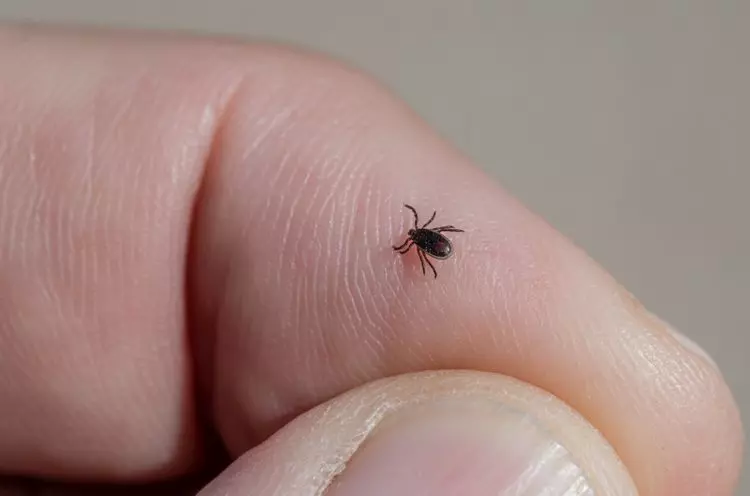
Photo Credit: by Erik Karits, Unsplash.com
Most people associate tick season and Lyme disease with summer, but this is one of the biggest myths about Lyme disease. In reality, while May-August is considered peak season, October-November presents a second peak season. Depending on the climate, you can actually be bitten any time of the year. Milder winters predict worse peak seasons, since ticks survive better in milder weather.
Lyme disease not only causes acute infections, symptoms of which can present as fever, headaches, rash and joint pain, but, what makes it worrisome is the fact that it can lead to many long term complications such as cardiac and neurological issues, as well as chronic joint pain. Despite this, many myths about Lyme disease exist.
Here Are the Most Common Myths:
1-Lyme disease only occurs in the Northeast. This is a common misnomer. Lyme disease has been reported in all 50 states as well as many parts of Canada https://igenex.com/tick-talk/9-common-myths-about-lyme-disease-and-other-tick-borne-illnesses/ In fact, certain parts of the West coast have incidence rates as high as in the Northeast. (See image 1 below).
2-If you don’t see a tick on your body, you won’t get Lyme. Many Lyme sufferers do not recall an initial tick bite which is why it’s important to do a daily check.
3-If you test negative for Lyme, you do not have it. Lyme disease is detected in the body by measuring antibody levels, not the actual antigen (the bacteria that causes the illness). If you test too early, before your body has had a chance to develop antibodies, you can get a false negative result.
4-Absence of an initial rash does not mean you won’t get Lyme disease. Up to 70% of people do not present with the typical “bullseye” rash associated with a tick bite.
5-There is only one kind of tick that can cause an infection. There are actually many types of ticks that can carry the bacteria that causes Lyme disease.
6-If you get bitten, you're likely to get Lyme disease. Lyme disease occurs in zero-fifty percent of those bitten, with those in high endemic areas closer to the 50% infection rate.
7-Lyme disease is not the only tick borne infection. There are many tick borne diseases, some of which are more common in certain parts of the country, ie Rocky Mountain Spotted Fever, Babesiosis, Ehrlichiosis, and Alpha gal allergy, a serious and sometimes life threatening immune reaction to a sugar substrate in the tick saliva.
8-Once bitten, there is no way to prevent getting a Lyme infection. A one time administration of the antibiotic, Doxycycline has an efficacy rate of 87% if given within 72 hours of a tick bite.
9-Even if you remove the tick right away, you can still get lyme. If a tick is attached to your skin for less than 24 hours, and more likely, even 36 hours, your chance of developing Lyme disease is extremely low. This is because it takes time for the bacteria that causes Lyme to move from the tick to the host.
So now that we’ve debunked these myths, what can you do to protect yourself from getting Lyme disease?
1. Wear long pants and long sleeves when going hiking or walking in wooded areas or near wooded areas.
2. Do a daily check after being in high risk areas. This is probably the most important step since your likelihood of getting an infection is low when a tick is found early. Have a partner check you or if you’re alone, use a bathroom mirror and a smaller second mirror if needed to see areas such as your back, and back of legs. It is important to also check your pet if they spend time outdoors.
3. Change clothing as soon as you get home in case there is a tick lingering on your clothing. If possible, wash your clothing after being in high risk areas. You can also throw your clothing in the dryer to kill any possible ticks.
4. Ticks love moist areas so don't forget to carefully check areas such as your hair, under the arms, back of the knees, groin area, and in between the toes.
5. Spray 20-30% Deet when in high risk areas. You can spray it on your clothing to avoid direct contact with skin, but make sure you don't spray near your nose or mouth so you don’t inhale the Deet.
6. Natural tick repellents are also very effective and include applying peppermint scented oils, Cedar oil, Citronella, and or Eucalyptus to your skin.
You took all the precautions but somehow you still found a tick bite. Now what?
1- Don’t panic. If you find a tick on your skin, with tweezers, grab the tick and firmly pull upwards. Do not wiggle the tick as this may also stimulate regurgitation of the saliva, increasing your chances of an infection. If for whatever reason you are not able to get the head out with the entire body, you can try again to firmly pull it out but do not manipulate it; It will eventually make its way out on its own. While some internet searches, and even some medical professionals had previously recommended applying peppermint oil over the tick to more easily pull it out, this has received controversial responses as some experts are now postulating that it may aggravate the tick into regurgitating more saliva into you on its way out.
2- If you're concerned after finding a tick and would like to protect yourself, you can call your doctor to prescribe a one time dose of an antibiotic called Doxycycline which as noted, can significantly reduce your chance of developing a Lyme infection, especially if given in the first 3 days. Buy Vibramycin Online – Doxycycline Hyclate Canada
3- If you’re not sure how long you’ve had the tick on your body and are worried about contracting Lyme, speak to your doctor about the possibility of getting a full course of antibiotics. This is not needed most of the time but certain factors may increase your risk.

Photo Credit: by igenex.com
Image 1: Green areas represent areas where Lyme borne ticks can be found. Taken from https://igenex.com/tick-talk/9-common-myths-about-lyme-disease-and-other-tick-borne-illnesses/
As always, consult with your doctor if you are worried you have a tick bite or have symptoms indicative of Lyme disease.
Your email address will not be published. Required fields are marked with *.